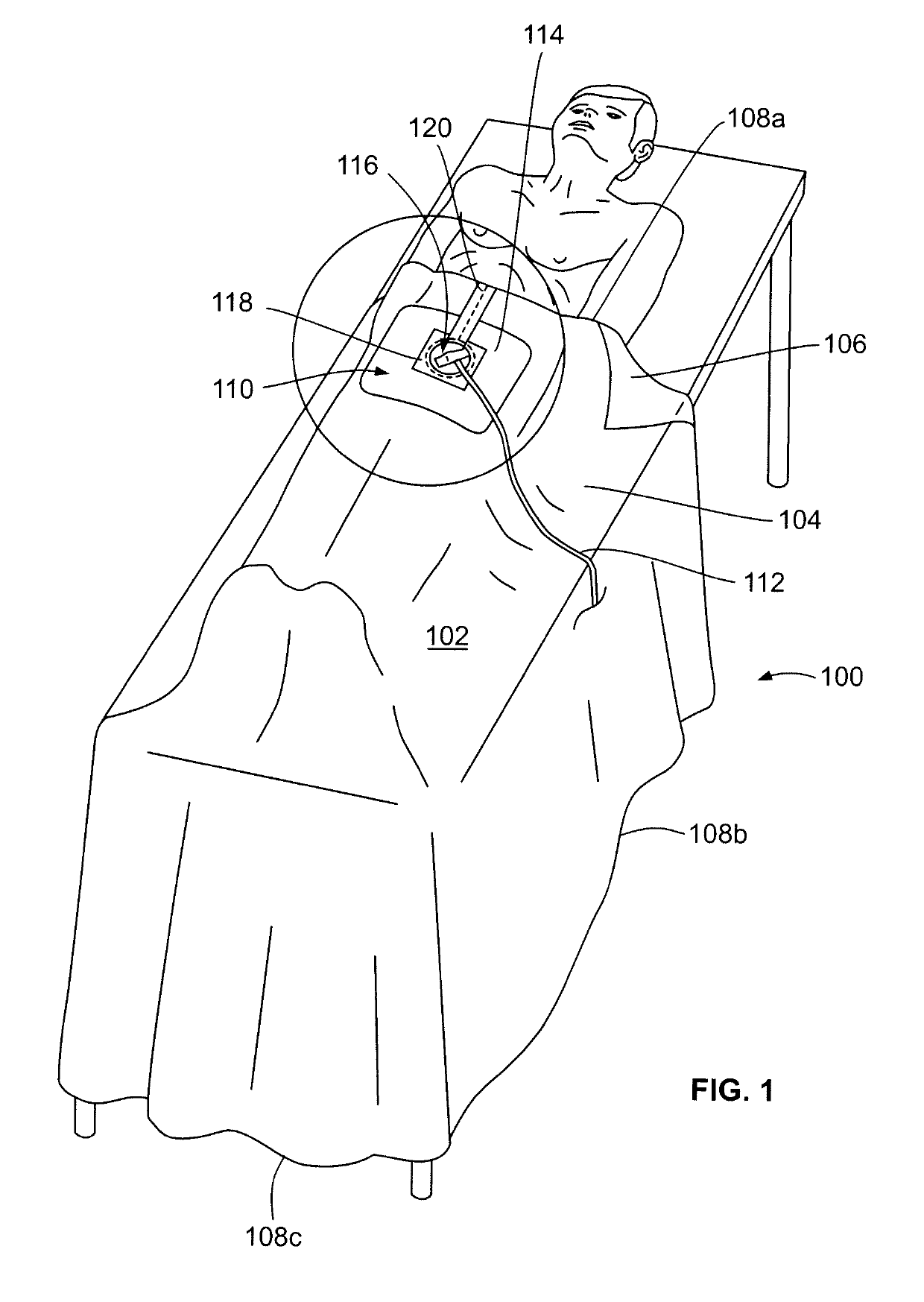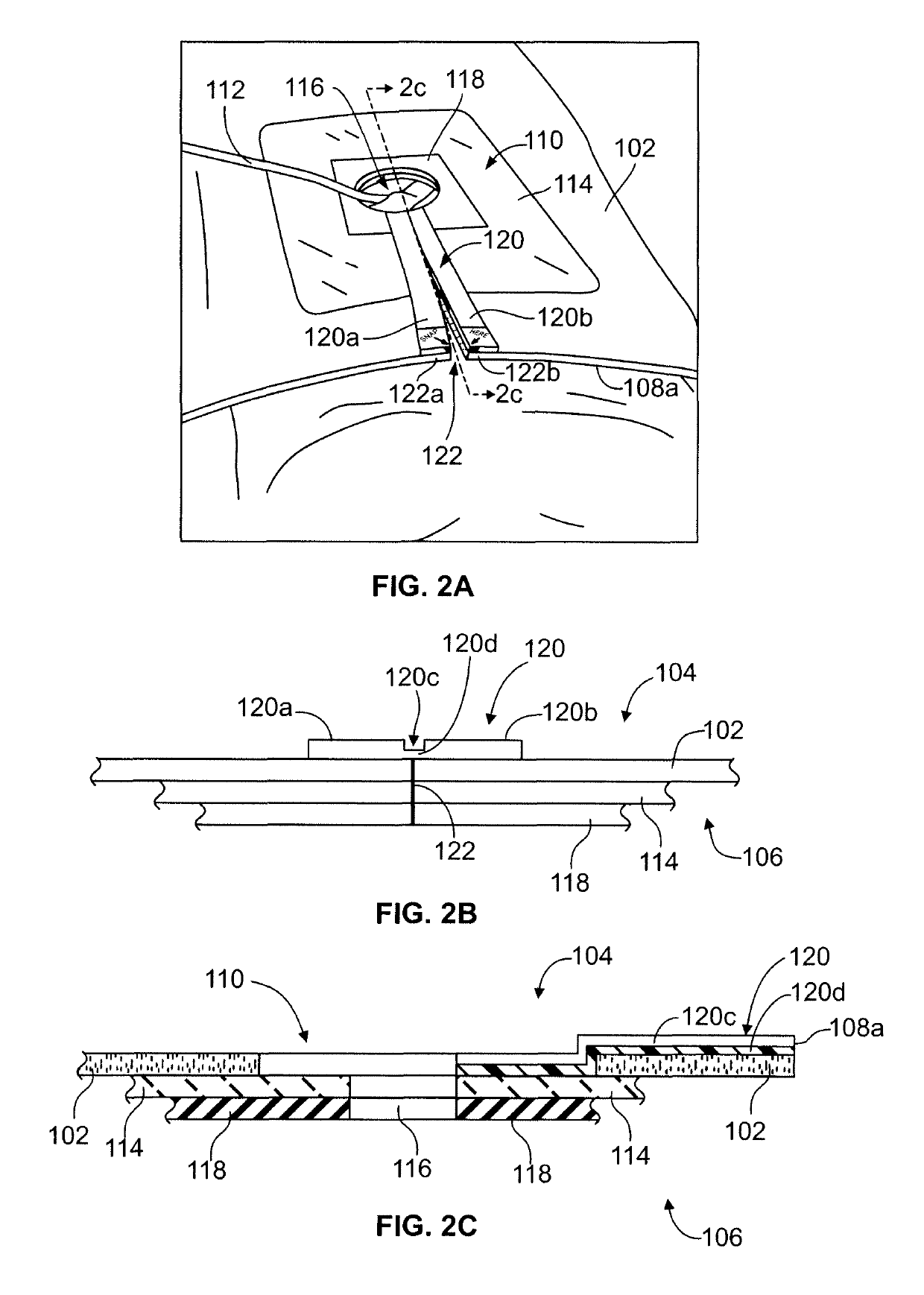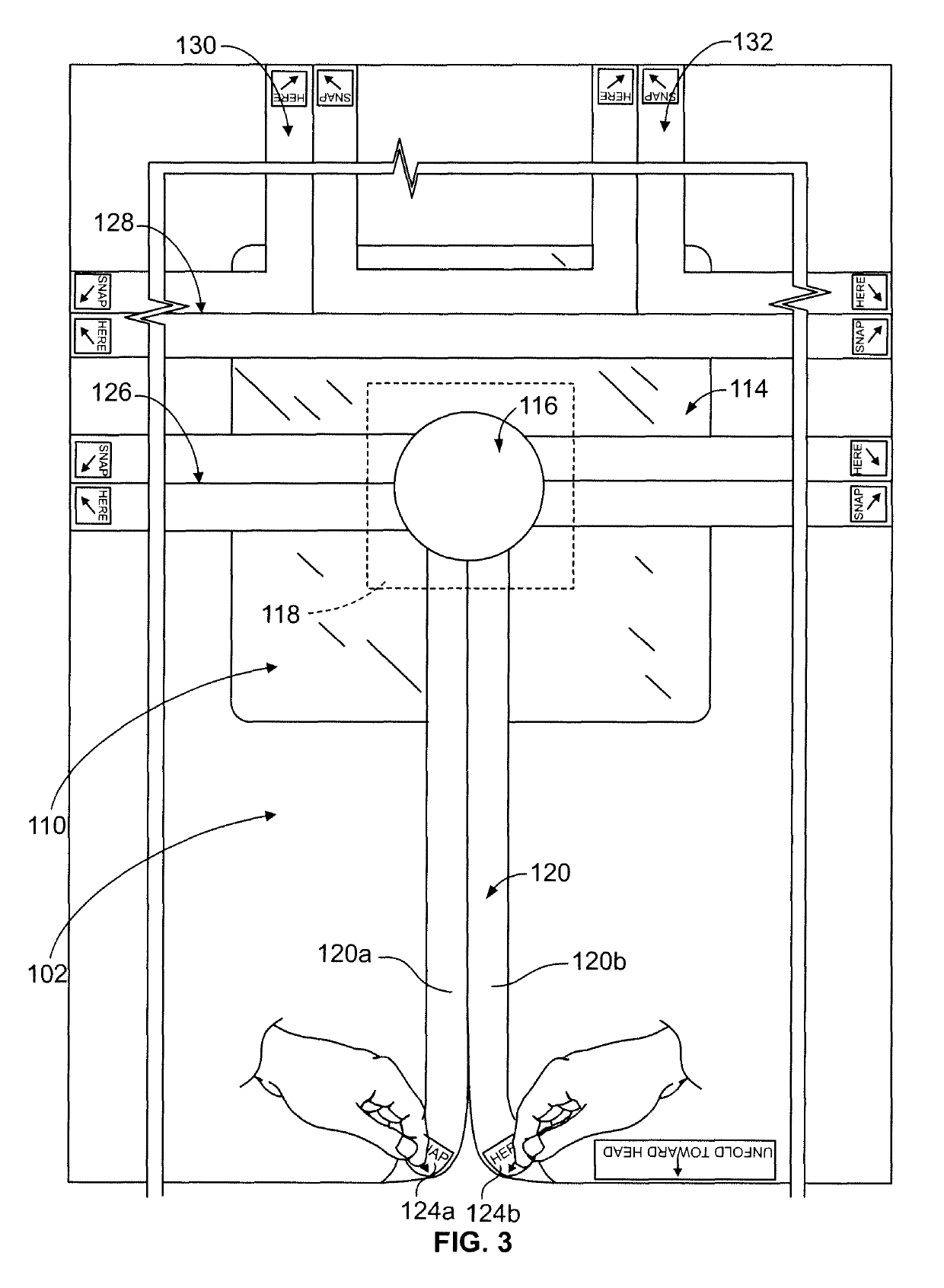Zip strip draping system and methods of manufacturing same
a technology of zip strip and medical drapes, which is applied in the field of medical drapes, can solve the problems of general problems such as the difficulty of removing medical drapes, the inability to meet the needs of patients,
- Summary
- Abstract
- Description
- Claims
- Application Information
AI Technical Summary
Benefits of technology
Problems solved by technology
Method used
Image
Examples
Embodiment Construction
[0023]In surgical procedures, many times intravenous (IV) lines or other delivery or drainage lines must remain in the patient after the procedure is complete. Described below in more detail is a medical system for removing a medical or surgical drape after completing a medical or surgical procedure without dislodging any remaining lines. The medical system includes features directed to manually tearing apart the medical drape, by hand, without using any tools (e.g., scissors). An advantage of the medical system is that it eliminates the potential for injury or damage caused by the tools. Another advantage of the medical system is that it consistently provides a clean and smooth tear in the medical drape. A further advantage of the medical system is that the tearing can be easily accomplished with the exertion of little force. Yet another advantage of the medical system is that it eliminates the potential for contamination of a sterile field, by adequately sealing adjoining edges of...
PUM
 Login to View More
Login to View More Abstract
Description
Claims
Application Information
 Login to View More
Login to View More - R&D
- Intellectual Property
- Life Sciences
- Materials
- Tech Scout
- Unparalleled Data Quality
- Higher Quality Content
- 60% Fewer Hallucinations
Browse by: Latest US Patents, China's latest patents, Technical Efficacy Thesaurus, Application Domain, Technology Topic, Popular Technical Reports.
© 2025 PatSnap. All rights reserved.Legal|Privacy policy|Modern Slavery Act Transparency Statement|Sitemap|About US| Contact US: help@patsnap.com



